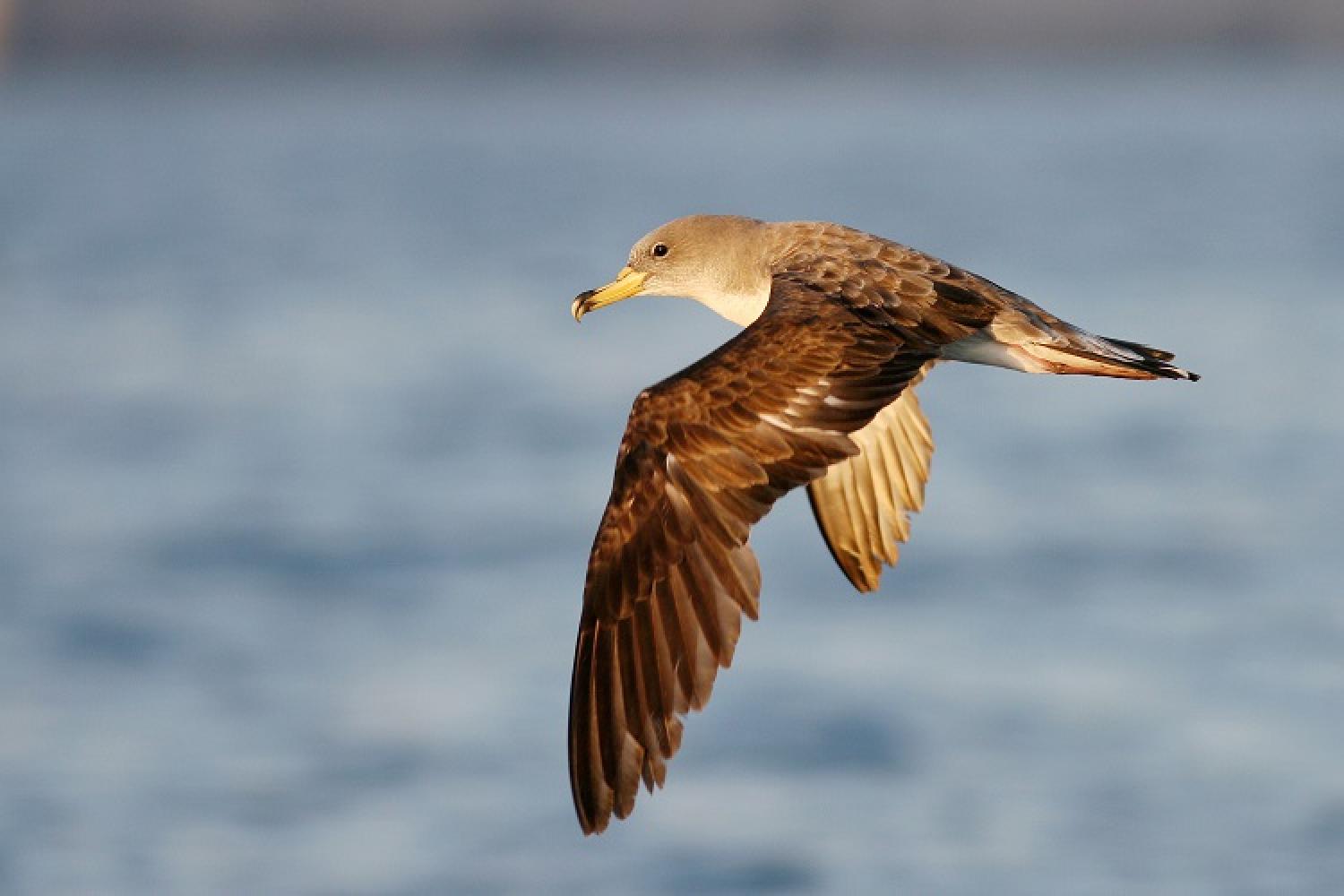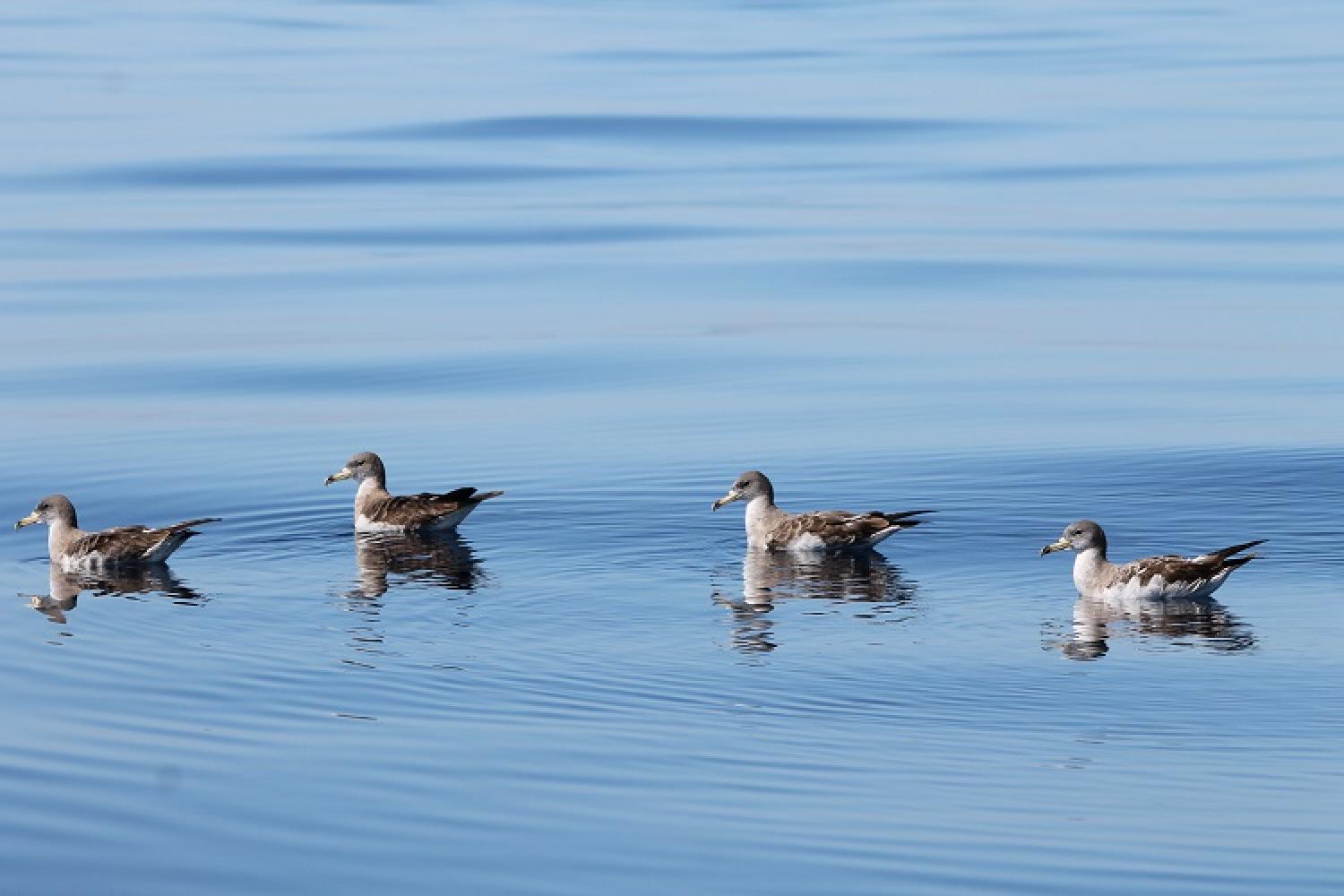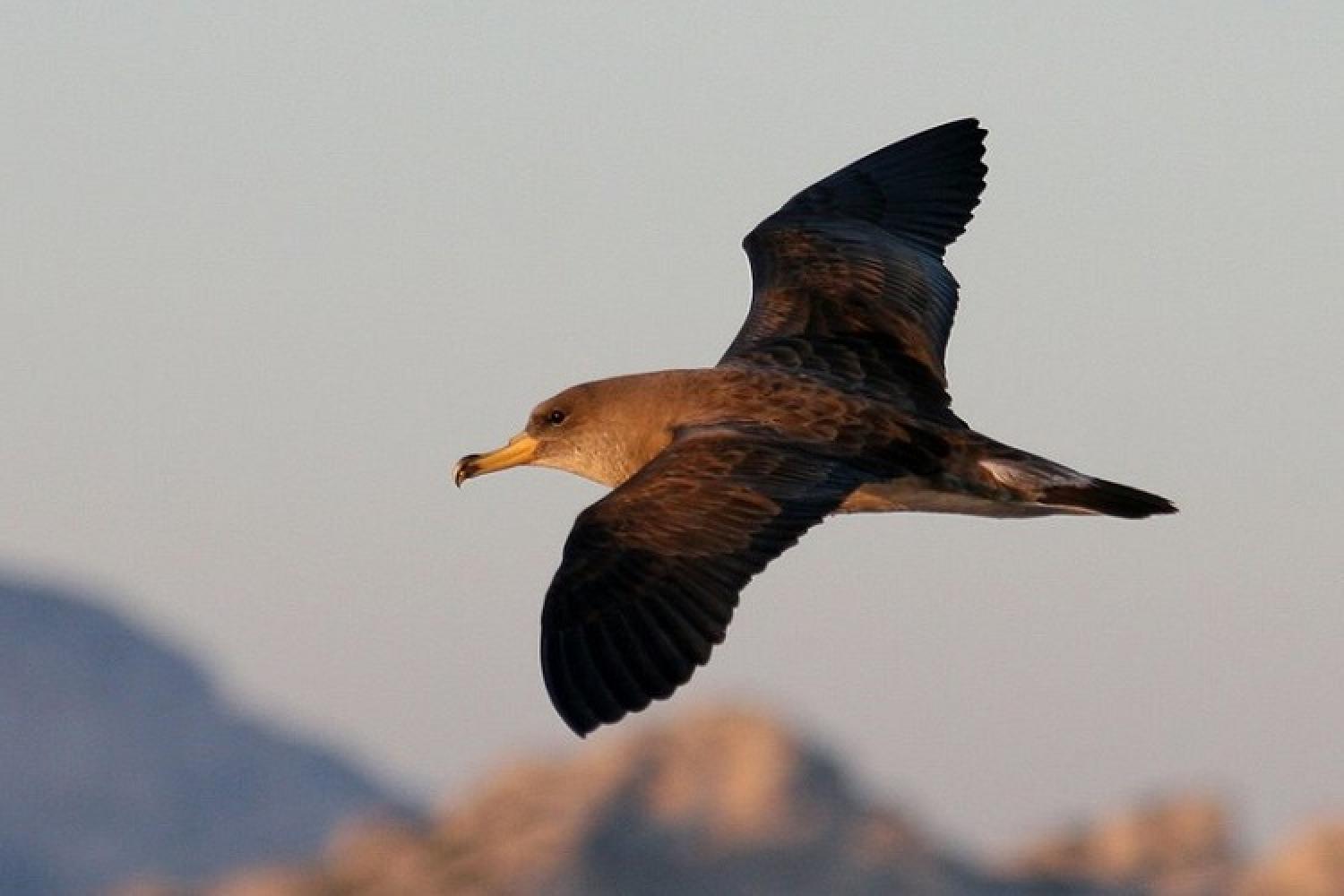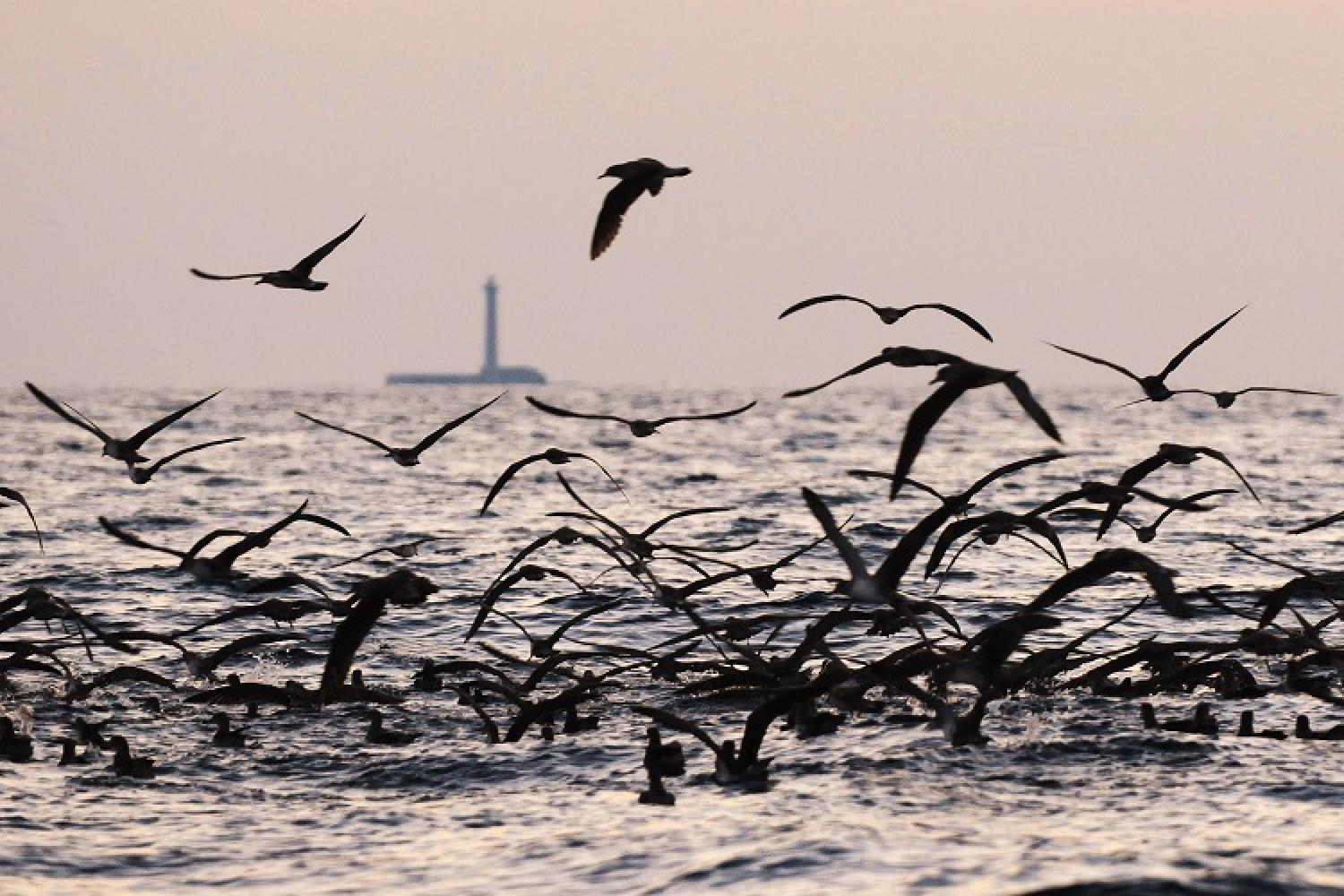A true sea bird, this Mediterranean albatross spends most of its time at sea.
It can be seen at dusk flying close to the surface of the water skimming the waves. After a long journey in the South Atlantic Ocean it returns to nest in the islands around Marseilles every year, in spring. The female lays a single egg that she then incubates alternating with the male.
Scientific name : Calonectris diomedea
 Did you know ?
Did you know ?
The ringing of Scopoli’s shearwater has been able to demonstrate how long they live for. Those on the islands around Marseilles are more than 30 years old.
 Conservation stake
Conservation stake
![]()
 Threats
Threats
- Predation by introduced mammals (black rat and feral cat)
- Disturbance by humans mainly at night
- Accidental capture by fishing boats
- Changes to its environment
 Conservation management initiatives
Conservation management initiatives
- Channelling of visitors
- Capture and monitoring of introduced mammals (black rat and feral cat
 How can I help to protect it?
How can I help to protect it?
- I keep my dog on a leash on the Frioul archipelago
- I do not take my dog to the Riou archipelago
- I keep to the marked trails




